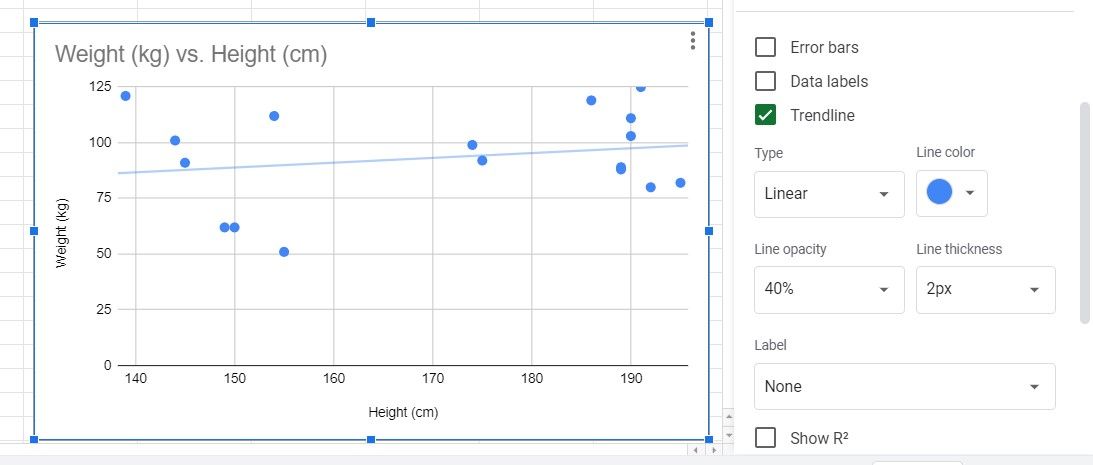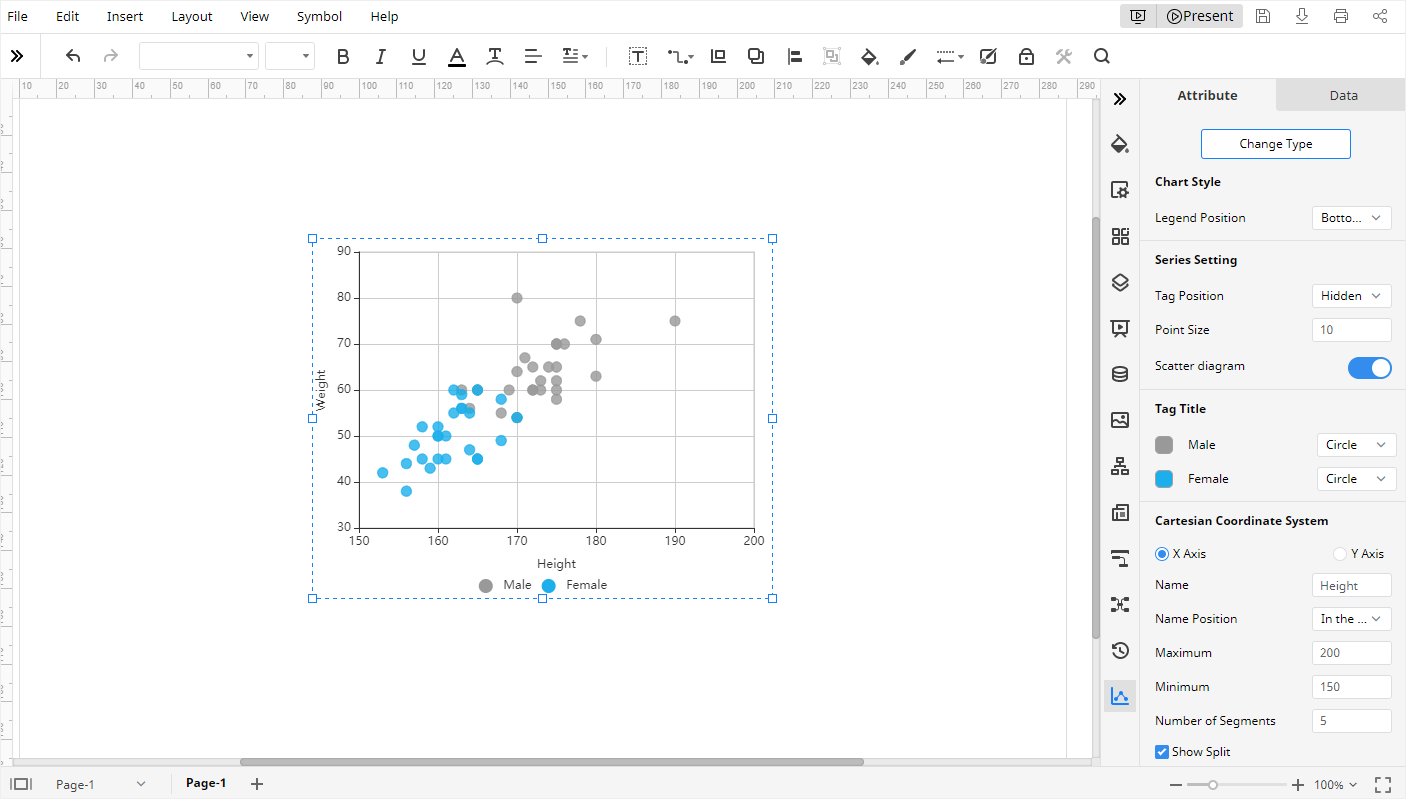
They were created by using a constant value of 2.25. The chart below shows error bars added to a simple scatter chart to show uncertainty in the data. These bars are found in the customization menu and be set for different ranges in percentage or absolute terms.

To illstrate that your data in not precise and may be within a certain range, error bars can be used. Scatter chart with a polynomial trendline Error Bars The data is the same as the data used for the exponential trendline. Note that the polynomial trenline is more tightly correlated with this data. Scatter chart with an exponential trendline PolynomialĪ polynomal trendline should be used when data flucuates between values. Scatter chart with correlation value shown on chartĮxponential trendlines are a good fit for data that increase or decreases at a constantly increasingn rate. Note that the slope calculation and correlation value were included in the chart by choosing “Use Equation” as the label and placing a checkmark next to R 2 to the correlation in the customization are of the chart menu. This chart shows data with a correlation between -1 and 1. If it were, there would be no “scatter” in a scatter chart. Of course, not all data are so highly correlated. Scatter chart with correlation value of -1 For example, the relationship between BTU’s needed to heat a room and the outside temperature would create a graph that slants down as it moves along the x axis. Some types of data could have a negative correlation. Scatter chart with correlation value of 1 Note that it will only be 45 degrees on the chart if the scale of the x and y axis are the same scale. The line of best fit with a perfect correlation is linear and extends 45 degrees from left to right. If the left shoes size increases by one, so does the right. This means that each of the two variables move in lock step with eachother in the same direction. You can choose from several types of trendlines Linearīelow is a simple scatter chart with a correlation value of 1. This line can be straight (linear), or it can be a curve (exponential or polynomial).

If you are trying to find data points inside the current set, it is called interpolation. This line can be used to extrapolate correlations outside of the current data. You can see how close the correlation is to 1 or negative 1 by simply looking at the distance that the dots are away from the line. You can draw a line through the data along the path which is the best fit based on the points already on the chart. A trendline is the layman’s tool for seeing the correlation. Most users for which a spreadsheet chart is made will probably not remember what a correlation value means. The random value range was kept small so that it would create a tight correlation. The chart was created in Google Sheets using random values for the Y axis and (Y + random values) for the X axis.

928, with the highest value of any correlation being 1. In the example above, the correlation is. Mathematically speaking, creating a scatter chart lets you visualize the correlation between data points, if there is any. Customization menu Example scatter chart Video Explanation

These options can be found on the customize menu when inserting a chart. The first example below has had its points reduced to 2 px, a linear trendline added, and the correlation shown in the upper right hand corner of the chart. These charts can be customized in many ways. If you use any more than two variables, the chart can start to appear confusing and thus reduce its usefulness. This chart type decision tool can help you decide.Īs an example, if you want to see if more people will use the water park as it gets warmer, a scatter chart could be a good tool. When to use a scatter chartīefore you jump into using a scatter chart, be sure that it is the right type of chart for you. Once you can see the relationship, it can be used to predict future outcomes within certain confidence levels. Its simplicity can make it quite effective at cutting through the noise of large amounts of data in a Google spreadsheet. A scatter chart (AKA scatter plot or XY graph) uses points along a two-dimensional graph to show the relationship between two sets of data.


 0 kommentar(er)
0 kommentar(er)
